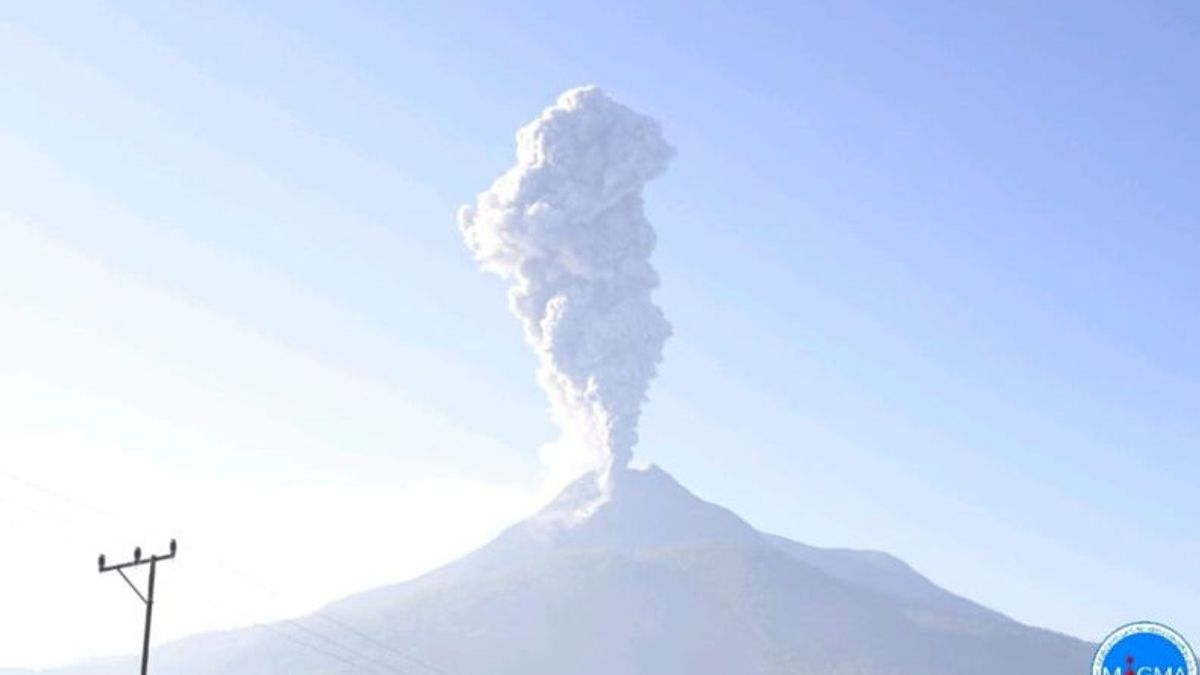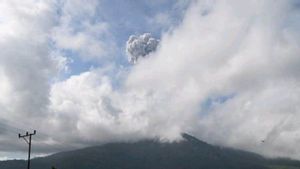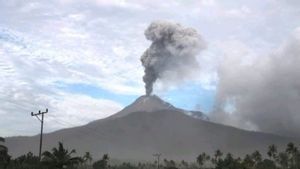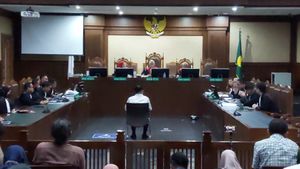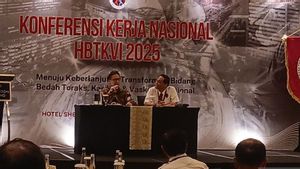JAKARTA - Head of the Center Volcano and Geological Hazard Mitigation Team, Geological Agency, Heruningtyas Desi Purnamasari said, Mount Lewotobi Laki in East Flores, East Nusa Tenggara (NTT), began to enter the effusive phase because it was observed that there was a fire from the mountain.
"Firelights can be indicated to enter an effusive phase in the form of lava flows or the formation of a lava dome," said Heruningtyas when contacted from Kupang, Antara, Monday, June 10.
Mount Lewotobi Men were observed to experience a strombolian eruption last Sunday and there was a fire beam emitting during the eruption.
According to Heruningtyas, there are indications of the formation of a lava dome in the form of piles of materials resulting from the eruption in the peak area. The lava dome is also in the crater area of the peak.
"The ejection of incandescent material is still falling around the peak," he said.
The Geological Agency today raised the level of activity of the Lewotobi Male Volcano from Level II Alert to Level III Alert starting at 09.00 WITA.
The increase in activity levels refers to the evaluation of visual observations for the period 26 May-9 June 2024 which shows an increase in the volcanic activity of Mount Lewotobi Laki, which is marked by an eruption almost every day with an average eruption column height of 100-900 meters from the top of the mountain.
Heruningtyas said several villages were also affected by volcanic ash, namely on the southwest, west, northwest, and north sides of the mountain.
"The affected villages are Boru, Nawokote, Hokeng Jaya, Klatanlo, Pululura, and Dulipali villages," he said.
With the increase in the activity level of Mount Lewotobi Male, the community, visitors or tourists are recommended not to carry out any activities within a radius of 3 km from the eruption center, as well as sectoral 4 km in the North-Northeast and 5 km in the Northeast sector.
The Geological Agency also appealed to people affected by ash rain to use a mask or mouth covering to avoid the dangers of volcanic ash in the respiratory system.
SEE ALSO:
The English, Chinese, Japanese, Arabic, and French versions are automatically generated by the AI. So there may still be inaccuracies in translating, please always see Indonesian as our main language. (system supported by DigitalSiber.id)
Most Popular Tags
#Prabowo Subianto #NCP #Palestine #tangerang sea fence #budget efficiency #iims 2025Popular
16 Februari 2025, 06:03
16 Februari 2025, 08:30
16 Februari 2025, 12:15
